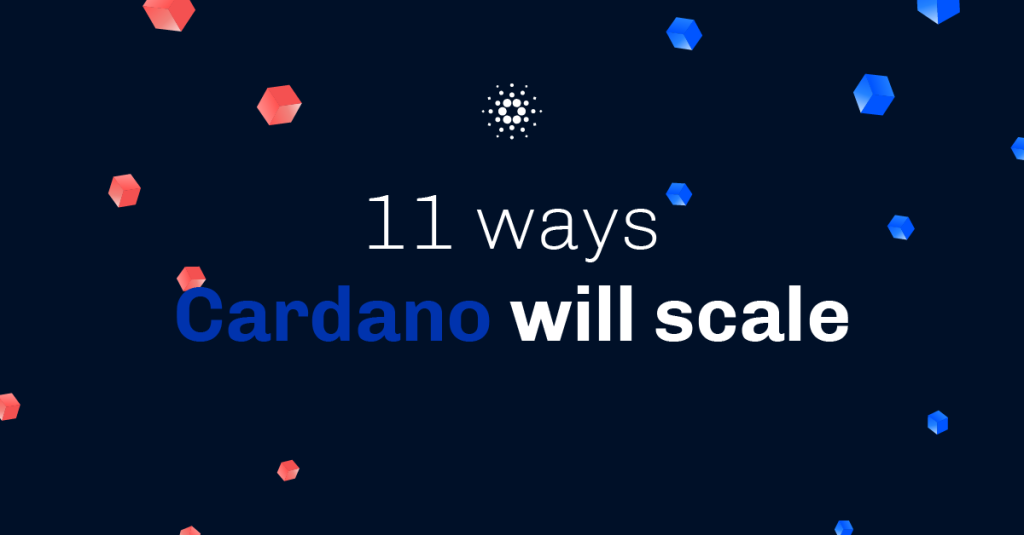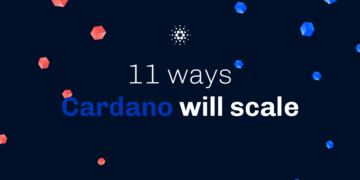Thursday 20 January 2022 11:47 am

2021 was the year that the world-leading blockchain platform Cardano lived up to its promises of delivering ‘smart contract’ functionality, which means that Cardano is now open for business for people to build huge numbers of decentralised applications, exchanges and assets on the platform.
Tonight, a much-anticipated decentralised finance exchange (DEX) on Cardano, Sundaeswap, will undertake its beta launch. This means that users will be able to buy, sell, lend, borrow and swap Cardano’s ADA token against a growing number of tokens (such as World Mobile, Liqwid Finance and Sundaeswap’s own) being launched into the fast growing Cardano ecosystem.
This is a huge milestone in the rapid growth of Cardano’s DeFi ecosystem, and with rapid growth comes a significant rise in demand and network traffic. Fortunately, as a Layer 1 solution, Cardano has capacity to grow. Romain Pellerin, CTO at IO Global, sat down with Crypto AM to talk about the early days of DeFi on Cardano, the Sundaeswap launch, and to outline 11 innovations Cardano will utilise to scale in 2022 to meet increasing network activity.
The Sundaeswap team is playing a crucial role in the nascent and effervescent community of development of DeFi applications on Cardano, working closely with Input Output on open source tools for developers to make the process of building on Cardano as easy and efficient as possible. Today marks a major milestone for the Cardano ecosystem with the launch of the Sundaeswap decentralised exchange, which will be the most significant and ambitious launch to date on Cardano.
With today’s launch, and the rapid growth of decentralised finance on Cardano, we anticipate there will be periods of high demand and network congestion – this is expected given the anticipated high usage of the platform, and the incredible number of decentralised applications and exchanges that will be launching this year.
We had always anticipated this in our roadmap, which will see this year focus on performance optimisation and scaling, addressing the classic blockchain trilemma of scalability, security, and decentralisation. All of this comes on a basis of formal development methods and Haskell code – ensuring we have an incredibly secure platform. And thanks to our amazing community, we also have one of the most decentralised networks in the world – with more than 3,000 community operators contributing to the running of the network.
We have always taken a considered, safe and research-backed approach to development, which has served us well to date. We will continue this approach in 2022, by steadily increasing capacity and transaction speed to deal with the growth in the ecosystem and onboard first hundreds of thousands, then millions of new users. Our approach to network scaling in 2022 can be broken down into 11 stages:
- Increasing block size
Bigger blocks carry more transactions. We have increased block size by 12.5%, with further increases planned through 2022.
- Pipelining
Pipelining will further improve throughput this year by utilising ‘dead’ time between blocks.
- Input endorsers
The separation of transactions into pre-constructed blocks improves both throughput and the consistency of block propagation times.
- Memory/CPU parameters for Plutus
Memory usage is now more efficient to increase throughput and capacity via UTXO handling, hash representation, stake distribution, and live stake distribution and pools.
- Plutus script enhancements
Optimised smart contracts for more efficient use of the EUTXO model for inputs, datums, and script sharing.
- Node enhancements
Node v1.33.0 introduces enhancements to RAM usage and many efficiency upgrades.
- On-disk storage
By storing portions of the protocol state on disk, nodes will need to hold less in memory, removing a bottleneck on scalability.
- Sidechains
A separate chain connected through a two-way mechanism to move assets back and forth, maintaining settlement on the main chain.
Isomorphic state channels that maximise throughput, minimise latency, incur low to no costs, and greatly reduce storage requirements.
- Off-chain computing
By moving some computations off-chain (through ACE, for example), the network works more efficiently, yet retains trust.
Mithril supports greater scalability by improving and optimising chain synchronisation through fast and efficient multi-signature aggregation.




